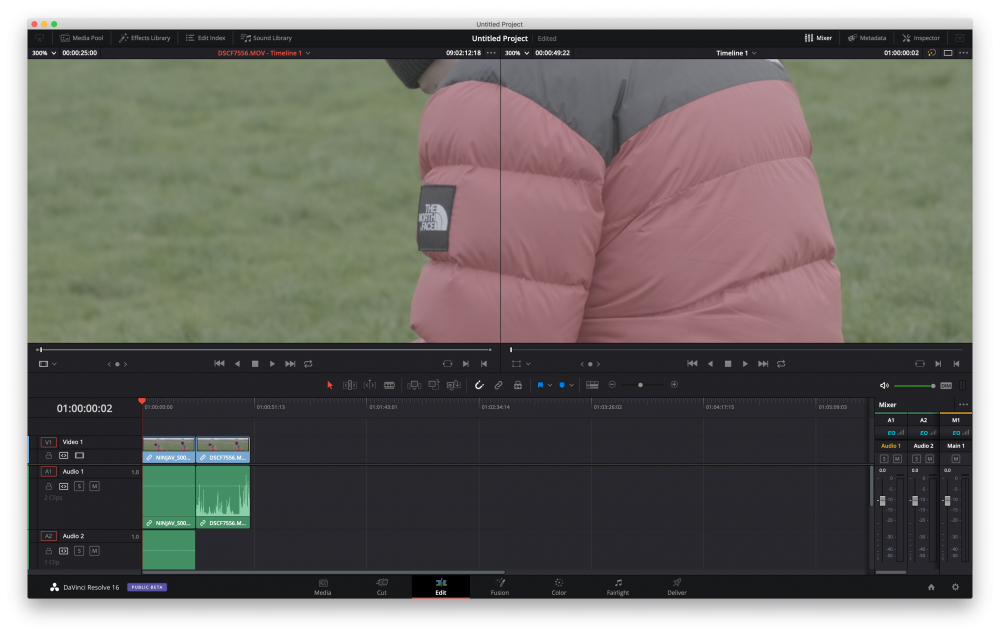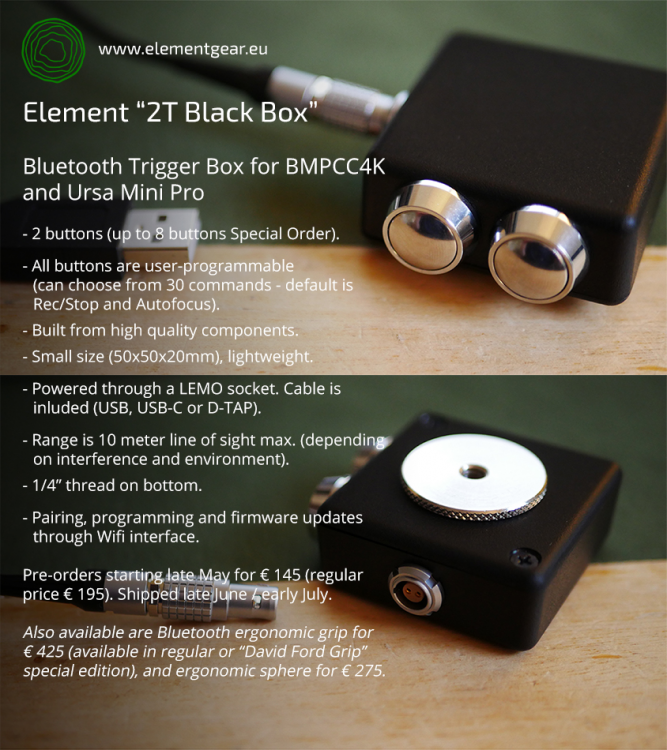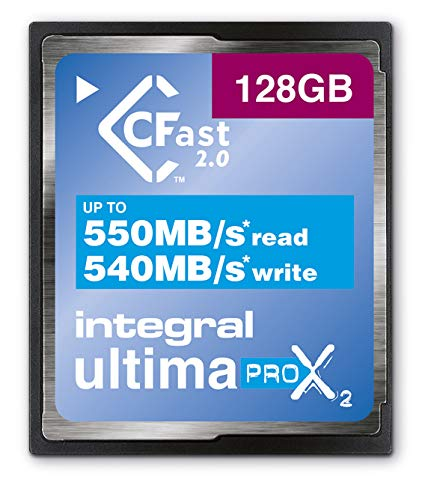
Anaconda_
Members-
Posts
1,514 -
Joined
-
Last visited
Content Type
Profiles
Forums
Articles
Everything posted by Anaconda_
-
I didn't transcode anything, this is the OG files directly into Resolve.
-
Those stills look great, but if you turn all the lights off, zoom in to 500%, strain your eyes and sit 2 inches away from the screen, the image really falls apart. Such a shame because the camera was so close to being perfect, but it's really just overpriced.
-
Here's a screen grab of the images in Resolve, the left screen is the XT3 file and the right is from the Ninja. I set them both to 300 and lined them up to form basically one image with a line in the middle. I thought that would be the easiest way to see if there's any difference in the colour. - both are set to Full in Clip Attributes. To my eyes, they're exactly the same, but if there is a difference, I wouldn't even think about it while shooting. One thing I did notice though, is the capture from the Atomos is 2 or 3 frames behind the file straight from the camera, nothing major, and I'm sure it's not camera / recorder specific, but worth noting. Edit: If people want, I could also post screen grabs from the colour page, showing the histogram, vector scope, curves etc. But they don't change at all between the clips. Safe to say they're exactly the same image from that perspective too...
-
I wonder if that's because with Braw, you kind of need Resolve to use it - or be on Windows and buy the Premiere plugin separately. Great news for people who already have one camera with the software though!
-
If someone uploads a clip, I'll happily open it in Resolve and test some stuff out - just let me know what you need to know about it
-
It's a shame the price is so high and it still needs external power. For me, the only benefit this has over using your phone is tactile buttons.
-
Yeah, but even still, I think you'd be better off with one of the smaller sleds that take 1 battery. That way you can just have 3 on rotation and shoot all day long. 1 charging, 1 charged and 1 on the camera. Thanks for the info!
-
Oh that sucks, kind of defeats the purpose of mounting two batteries for me. Do they both discharge at the same time too? For example, if 2 batteries gave you 4 hours, could you run it for 2 hours, change 1 battery and still have 4 hours to go?
-
This is an interesting solution. Vmount to dual npf pries with power meters and dtap. Hot swappable external power that's pretty cheap to run all daylong. https://www.amazon.de/Baxxtar-1837-2-V-Mount-Adapter-Ausgang/dp/B077VQ7PVL
-
Hmm, that's a bummer, but at least the card works somewhat. Since you're using ExFat, have you tried formatting to OSX in camera? If that works, you might then be able to format again to ExFat from the now blank card. A stupid work around, and probably won't work, but I'd try if you haven't already. I also read that if there's a bit of dirt on the contact points on the card, the camera might have issues, while other card readers won't... could you check that just to be doubly sure. I think the best course of action would be getting a new card and keeping this one as a backup, always initiated on a PC and kept in your back pocket. If it's any help, I use these in our UMP4.6k (not Pro) and so far never had a problem. They're also the cheapest Cfast 2.0 cards I could find.
-
As long as the footage and media is in the same location as your last save, it'll open as normal with everything still connected. If your media is in a different locations, you just need to point resolve to the folder it's been moved to and it'll connect everything in that folder. Cuts, colour, transitions etc. Are all left the same.
-
@thephoenix For a project that size, I would edit and grade in 1080 and then change the timeline resolution to 4K before the export. I've often had much better playback rates working this way on larger timelines. Of course, change to 4K before you do any graphics/titles as well to avoid them being the the wrong part of the frame later on Doing it this way, you might be able to get away with using the slower drive, but not sure. Or once you've got a first draft edit from the slower drive, you could move the media that you're definitely using to the faster one, leaving the clips you don't need behind. As for exporting the project for reopening on another machine, or simply to keep things organised, I open the first menu (the home in the bottom right), right click on the project you want and then select Export Project and save it the .drp file wherever you need it to be. This is just the project file, so it won't copy any of your media along with it. I hope that helps
-
Have you tried formatting to both OS X Extended and ExFat in camera ? If that's no help try both options from a computer before putting it into the camera. Also try that card in both slots, maybe there's an issue with the slot not the card. Good luck!
-
That video doesn't show the point you're trying to make. You're comparing cDNG to Braw, but he states in the test that he's shooting ProRes - which if anything will be closer to Braw than to cDNG on any camera. On top of that, before he revealed which image was which camera, the OG BMPCC was my least favourite, with the BMCC coming second and P4K being the best. That said, I wouldn't complain about any of them, and your findings may vary - which is fine.
-
Well if you commute 1 hr each way to work every day, I can certainly understand passing the time with GOT on your phone. A lot of people here say the gear doesn’t matter, it’s all about the story. Doesn’t this also apply to the medium used to view that story?
-
Bloom added the x3000 to the comparison
-
Didn't you learn from the GOT guy? Just make it look good in the edit software and to hell with delivery or how anyone else watches it.
-
Maybe the conversation has moved on, but this made me laugh: "Thousands of Angry Game of Thrones Fans Call on HBO to Remake Season 8" https://www.vanityfair.com/hollywood/2019/05/game-of-thrones-season-8-remake-petition-hbo
-
It's that 'on PC' bit that's stopping me from testing it out.
-
I use Handbrake for h265 encodes. Seems quick and very customisable with how much you want to compress the footage. It's free with fairly regular updates.
-
Ah sorry, I misread and didn't want the delay to go under the radar - it's a biggy.
-
Like this? Skip to like 3 minutes for a great preview of exactly what it's doing to stabilise. But imagine trying to film someone while walking next to them. Those couple of seconds will make it very difficult to keep them framed nicely. While it allows the camera to look ahead in time, the operator still works in the here and now.
-
Has anyone tried using the 'Beauty' effects? I was recently grading an interview and thought I'd give it a quick test and I'm more impressed than I was expecting. It kind of reminds me of Cosmo from the Magic Bullet Looks thing, but much more elegant and easier to control. Not sure about the parts where you can adjust individual features, and all that stuff, but to tidy up blotchy skin or whatever, I can see it coming in quite handy.






